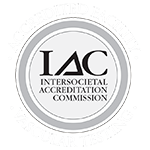
As Vascular Surgeons, we are frequently asked about the risk of air travel and the development of Deep Vein Thrombosis (DVT) or blood clots. Despite the abundance of warnings in airline brochures and “common knowledge” in the lay press, the scientific evidence is less overwhelming!
Despite the lack of clear evidence, we do believe that long travel (six hours defining “long”) is likely to be a risk factor for the development of DVT. The actual incidence is hard to know but some studies report it at 0.5% and others go as high as 2%. Irrespective of the rate, it is probably smart to be aware of the potential and try to reduce it when taking a long flight or car ride.
How reduce the chance of getting a DVT while traveling:
- Exercise—by pumping your calf muscles you will force blood out of your leg back into the circulation. Clots form when blood is stagnant (“pooling”) so by simply doing things such as ankle rolls or getting up on your tippy toes, you will prohibit blood from being stagnant and “coagulating” into a clot.
- Stay Well-Hydrated—while many people like to drink alcohol on-board an airline flight, this does dehydrate you and can increase the risk of blood clotting.
- Support Stockings—while terribly uncomfortable, the knee-high stockings will aid your legs in pushing blood out of the legs back into the circulation when you do the exercises discussed above.
- Talk to your Board Certified Vascular Surgeon—there are instances where the use of a preventive medication would be warranted. This will depend on your history, family history, length of travel and other risk factors that you may have.
We certainly do not want you to cancel that trip you have been looking forward to for a long time! Our Vascular Surgeons at The Cardiovascular Care Group, are well versed in the prevention and management of DVTs. Come in and ask us about this!







